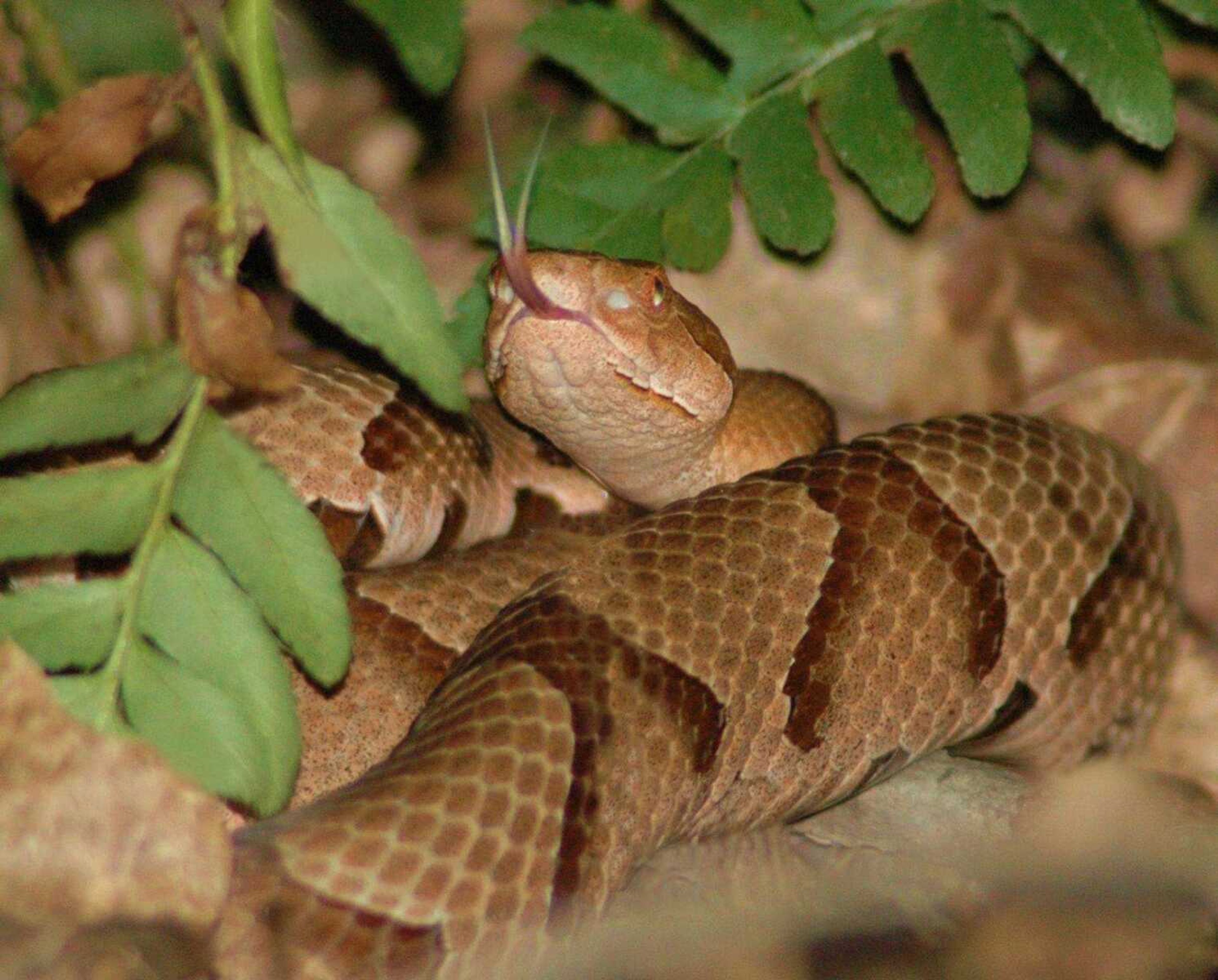Beautiful but dangerous
There are five subspecies of the American copperhead snake. The one here is the subspecies most common in Southeast Missouri. It is called the Southern copperhead because it can be found throughout the lower Mississippi River Valley and from eastern Texas to the Florida panhandle...
There are five subspecies of the American copperhead snake. The one here is the subspecies most common in Southeast Missouri. It is called the Southern copperhead because it can be found throughout the lower Mississippi River Valley and from eastern Texas to the Florida panhandle.
This snake is easily identified by the design of beautiful rust, tan, copper and pinkish colors. On a ground covered with dead leaves, the Southern copperhead can be difficult to see. It uses its camouflage to hide while lying in wait for a small rodent, frog or large insect.
Most copperhead bites happen because a person unknowingly steps on the snake. Go slowly and watch your step while outdoors during the months when temperatures rise above 65 degrees. The painful bite from a Southern copperhead will induce site throbbing and swelling, nausea and difficulty breathing. Seldom, if ever, will a victim die from just one copperhead bite. Still, immediate medical attention is warranted. Although a copperhead bite is sometimes a dry bite, where no venom is injected, severe secondary infection is always a possibility. Take no chances.
The Southern copperhead's venom contains a special protein called contortrostatin. When administered to cancer patients this protein can halt the growth of cancer cells and stop tumor migrations. Today this cancer treatment is not practical because of the great imbalance between the venom supply and the much greater cancer patient demand for treatment. Who would have thought we could use more Southern copperheads?
Be careful when approaching any snake for a photograph. A snake can generally strike and hit anything within its approximate length. This snake was about two feet long. I closed to within about six feet for the photo.
The snake was trying to scent me by tasting the air with its tongue.
Through the Woods is a weekly nature photo column by Aaron Horrell. Find this column at semissourian.com to order a reprint of the photo. Find more work by him at the O'Tenem Gallery.
Connect with the Southeast Missourian Newsroom:
For corrections to this story or other insights for the editor, click here. To submit a letter to the editor, click here. To learn about the Southeast Missourian’s AI Policy, click here.











